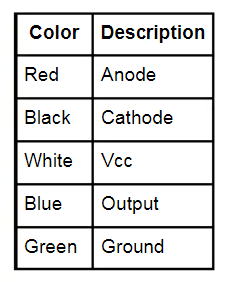I am trying to use this photogate with my Arduino Pro Mini (5V.) I am having no luck getting any readings from it.
I measured the voltage across the emitter and got 4.5V, which should be enough to power the LED so I think the issue might be on the receiver side. I have tried using an external power supply up to 12V to power the receiver with some more juice (no difference.) I have the output pin hooked up to a multimeter and am consistently getting 0.1mV. I've tried this same setup with a different photogate and had no issues.
Here's my code if it's helpful at all:
const int sensIn =A0;
const int ledPin = 13;
const int green = 7;
int value;
void setup() {
Serial.begin(9600);
// pinMode(red, OUTPUT);
pinMode(green, OUTPUT);
pinMode(sensIn, INPUT);
pinMode(ledPin, OUTPUT);
}
void loop() {
digitalWrite(ledPin, HIGH);
delayMicroseconds(500);
value=analogRead(sensIn);
Serial.println(value);
delayMicroseconds(500);
digitalWrite(ledPin, LOW);
delayMicroseconds(500);
if(value==0){
digitalWrite(green, LOW);
}
else{
digitalWrite(green, HIGH);
}
}
Here's a picture of the breadboard and what each wire is. The blue wire is on pin 12 because that's when I was trying to use a digital pin rather than the analog one from the code. Sorry for the inconsistency:


